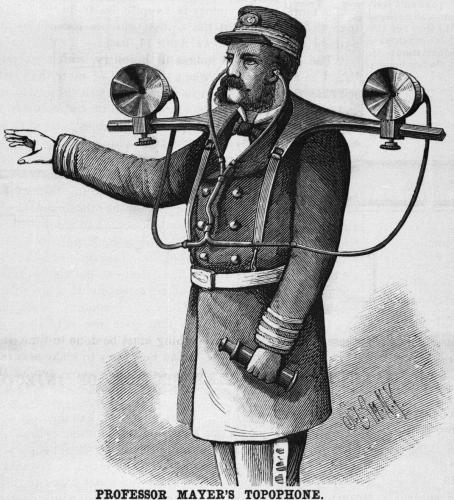© COPYRIGHT NOTICE All Rights Reserved.
Last Update:
29-Mai-2016
Portrait of a tube
Full Index List
Ca - PTT3 - 18028
Author: Jac van de Walle
18028. This tube is a fraction smaller than a 45, there is some resemblance. It is almost identical to TFK RE134.


Jacmusic Order Nr:
114-163-67
So.... it there another tube like RE134? The answer is: YES, there is. It is the Ca (German post), PTT2 (French Post) and the 18028 (By Philips). The German tube dealer RSD in Germany, was offering a re-based version of 18028, and called it RE134S. WIth "S" meaning "Special", which was the useual designation for re-based tubes.
18028 was a made by Philips, used by the post in telephone amplifiers. Though I failed to find a datasheet of the 18028, it appears to be very similar to Ca and PPT3, of which datasheets do exists.
Note: 18028 has a 3.6 Volts 1,1 Ampere heater, and RE134 is 4Volt 150mA. Apart from that, and the socket, 18028 is a direct replacement for RE134. Furthermore, dissipation of 18028 is 5 Watt, vs RE134 is maximum 3Watt. So it is upwards compatible. This is possible by the higher heater current of 18028.

RE134 has a damped barium layer, a very thin layer, coming from the Barium Pill which was on the inside of the anode, and activated after the bulb is closed. This is a simple and efficient technology, but not very high lifetime, as Barium depot of course is small. 18028 has the later technology Oxide coated filaments, like DHT are still made today. This uses some more heater current, but the technology offers higher peak emission, more convenient tube activation, and no risk of Barium spread inside. 18028 has the anodes in a vertical plane, like later tube always had. So also the problem of filament wire sagging is gone. Anode and heater construction show great similarity with early radio tubes from the USA, like the 30. Though electrical data of the 18028 is like Telefunken RE134.


Order Nr: 320-027-62
18028 has the five pin Siemens post socket. Nicely looking original sockets are rare, but from Yamamoto there is now beautiful socket from impregnated wood, with gold plated bronze contacts.
The fifth pin is used for socket shielding, same as the "red" painted Philips tube all have. PERFECT. So very nice for HiFi.

Original Boxes from the world war. Most have date code 1945 and VALVO Hamburg stamped on the box.
These are identical to the RT France PTT3, that is sure as can be. Specially with the typical VALVO 2R Glass on these tubes, and the Valvo boxes, it seems to me the so called "RT FRANCE" PTT3 was made by Valvo as well.

Large Size
PTT3 datasheets copy from the Piotr Bible.
As an output tube, you can get 1.5 Watt out of it. You can use a SE output transformers made for the 45 tube.
Another idea would be a PSE amplifier, using two 18028 per channel. That brings the tube impedance down to 2200 Ohms, and you can use a transformer from the 2A3 tube. This results in maximum 3 Watt per channel.
A good application would be a driver tube.It can produce enough AC signal even to drive tubes likes 2A3 or 300B.
Another application is a an output tube of a pre amplifier. Very nice is the relative good gain of 9x. So when you reduce the output voltage, with an output transformer, say a factor 6, you get an output impedance of appr 125 Ohms, and a total gain of the pre amp still of 1.5x. Very nice!

From what went on during the war, there is no reliable information presented on a platter. So we do have some unknown tubes, without datasheets Still this shows once more the close relation between Philips and Valvo Hamburg, as we know from before and after the war too
This Excel file with measurements, and all tube data in it, shows that Ca, PTT3, and 18028 have the same behaviour.
Thanks Aaron Karmelk for this Excel file about the 18028 and PTT3

It tests identical to RE134. Gain, Bias, transconductance, plate impedance, and tube curves, it is all the same. This makes it possible to use a tube tester that can do Ca.
The Boxed anode of the 18028 is the source for higher gain, combined with superb linearity still.
So.... How to use it as an output tube?
Well, that we have to reconstruct ourself.
From the Ca datasheet you can see this tube was used by the post office as a pre amplifier tube or driver tube, which is logical because the post needs to amplify telephone signals at low noise and low distortion, and not drive loudspeakers with it. Remember though, 18028 is also a big RE134, and that is a typical output tube indeed, so use of the 18028 will work very nice! There is just no datasheet for the 18028, and all we have is the recommended pre-amplifier use from the Ca datasheet.
However, we are very close already when we use the Ca tube curves.
The heater dissipation of 4 Watt is very high, and using a factor two, we have a plate dissipation of 8 Watt already. Compare this with the 45 tube, it has 3.75 Watt heater dissipation and 11 Watt plate dissipation. The 2A3 has 6,25 Watt heater, and 15 Watt plate. You always find a factor two or higher. Yet we will not overdo, and we use the 18028 at 6.5 Watt. So only a 1.6 factor, which seems very safe.
From doing some constructions with the plate curves, I have found following operating point, in auto bias.
Ua = 320V
Ia = 20mA
-Ug 25V
Vb= 345V
Rk = 1k2
Ra = 5k
Pa = 1.5 Watt. (2 Watt Peak)
8 Ohms Output Transformer: Lundahl LL1663-040
5 Ohms Output Transformer: Lundahl LL1682-050

© COPYRIGHT NOTICE All Rights Reserved

